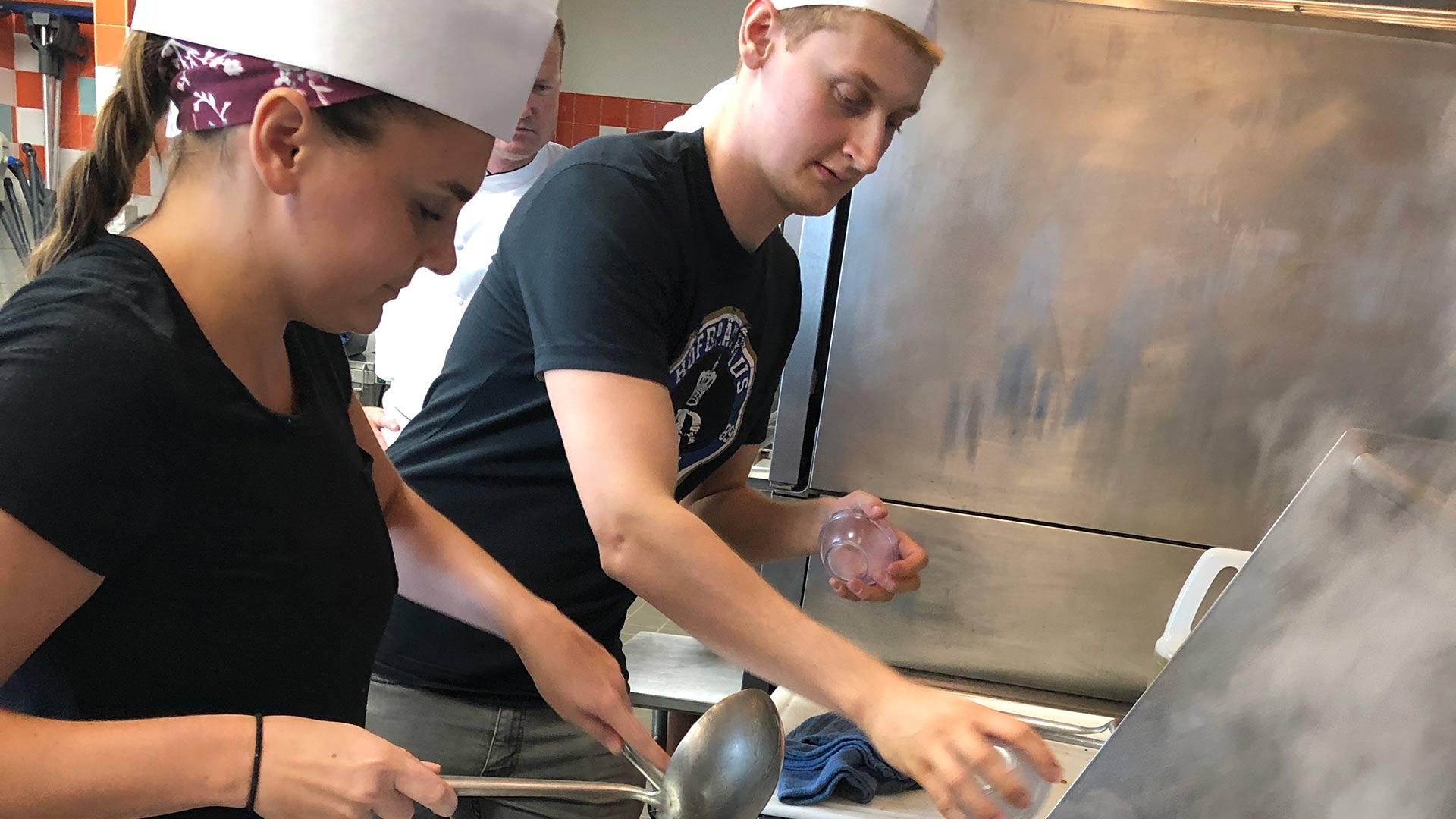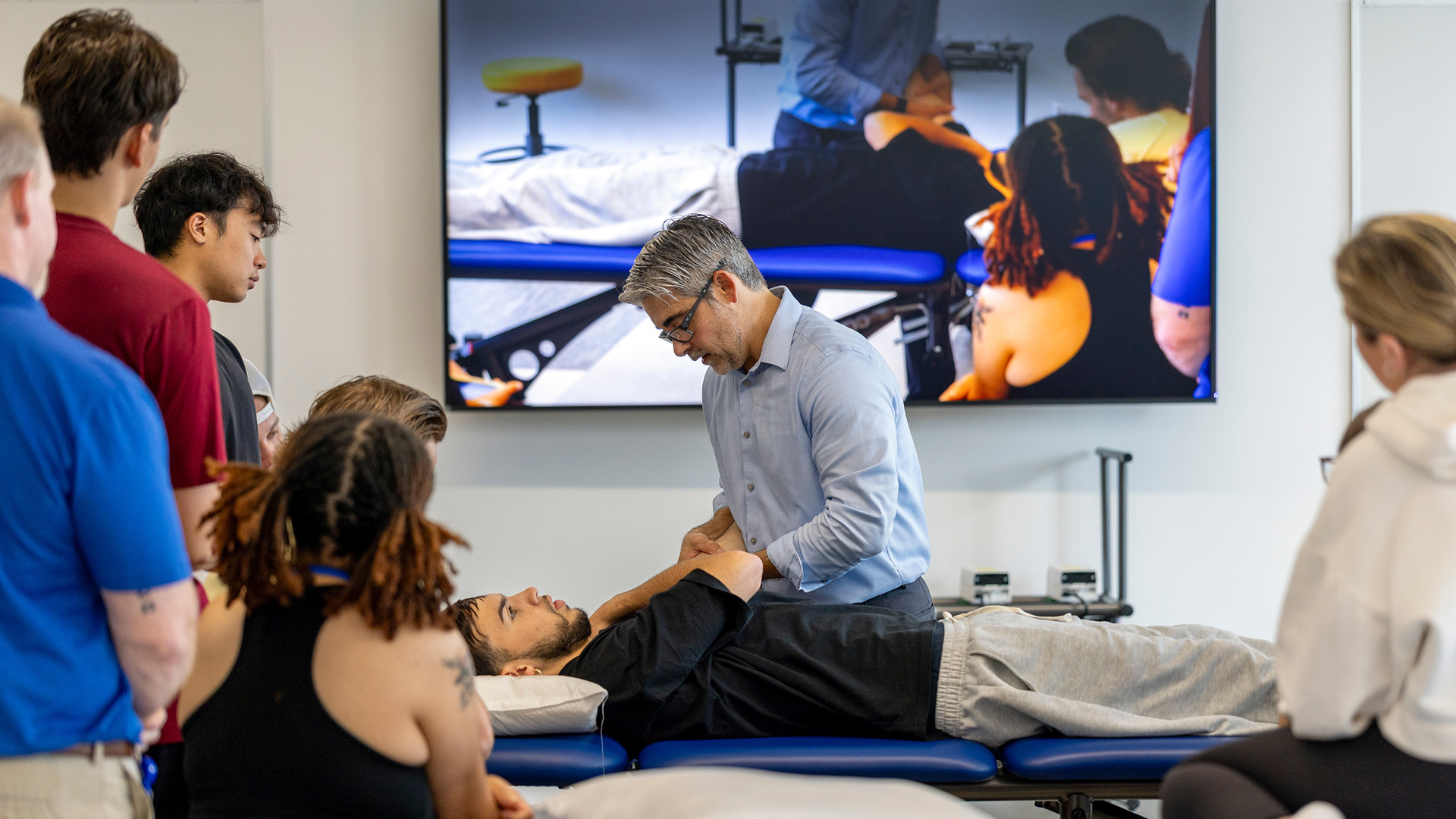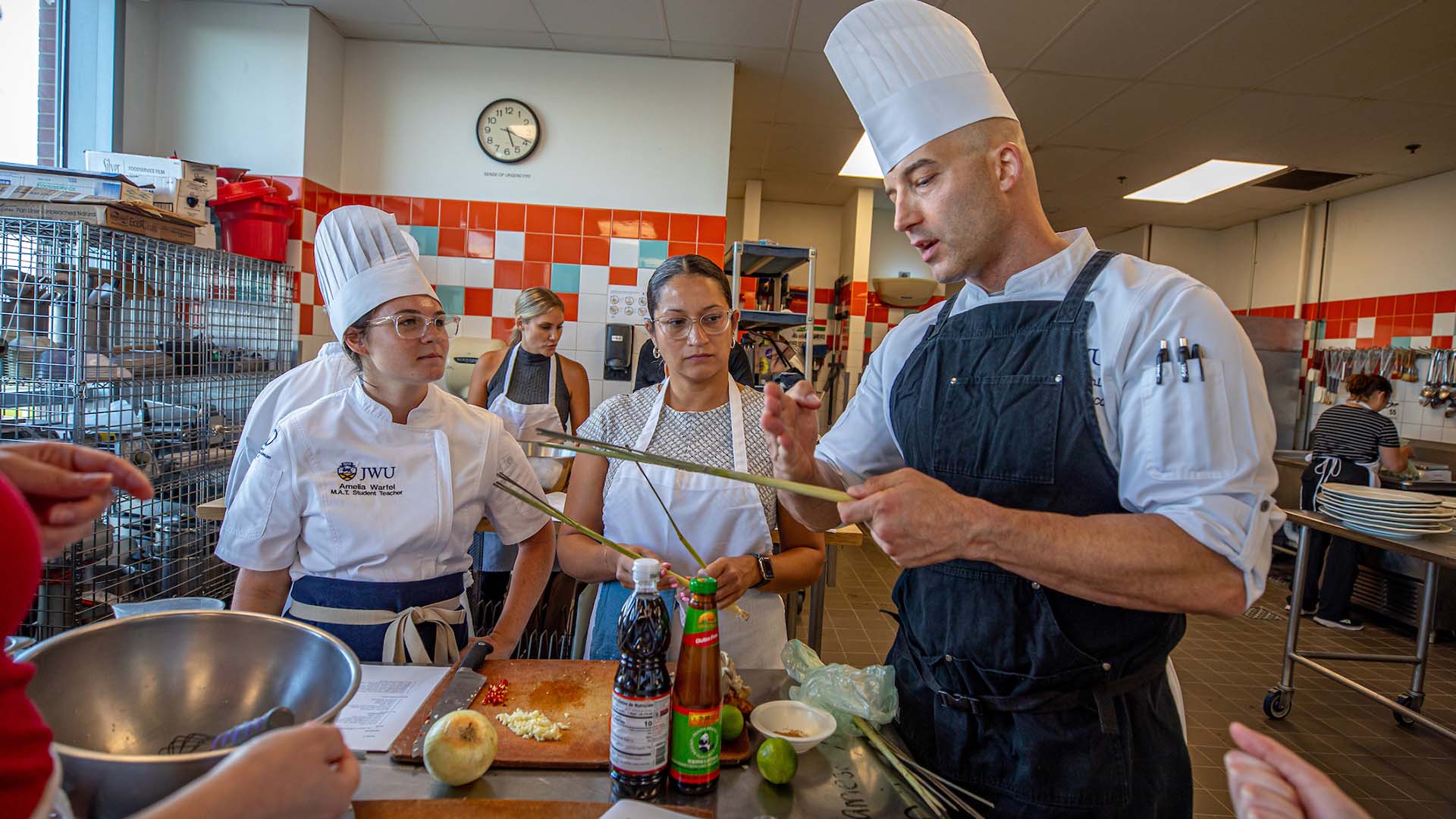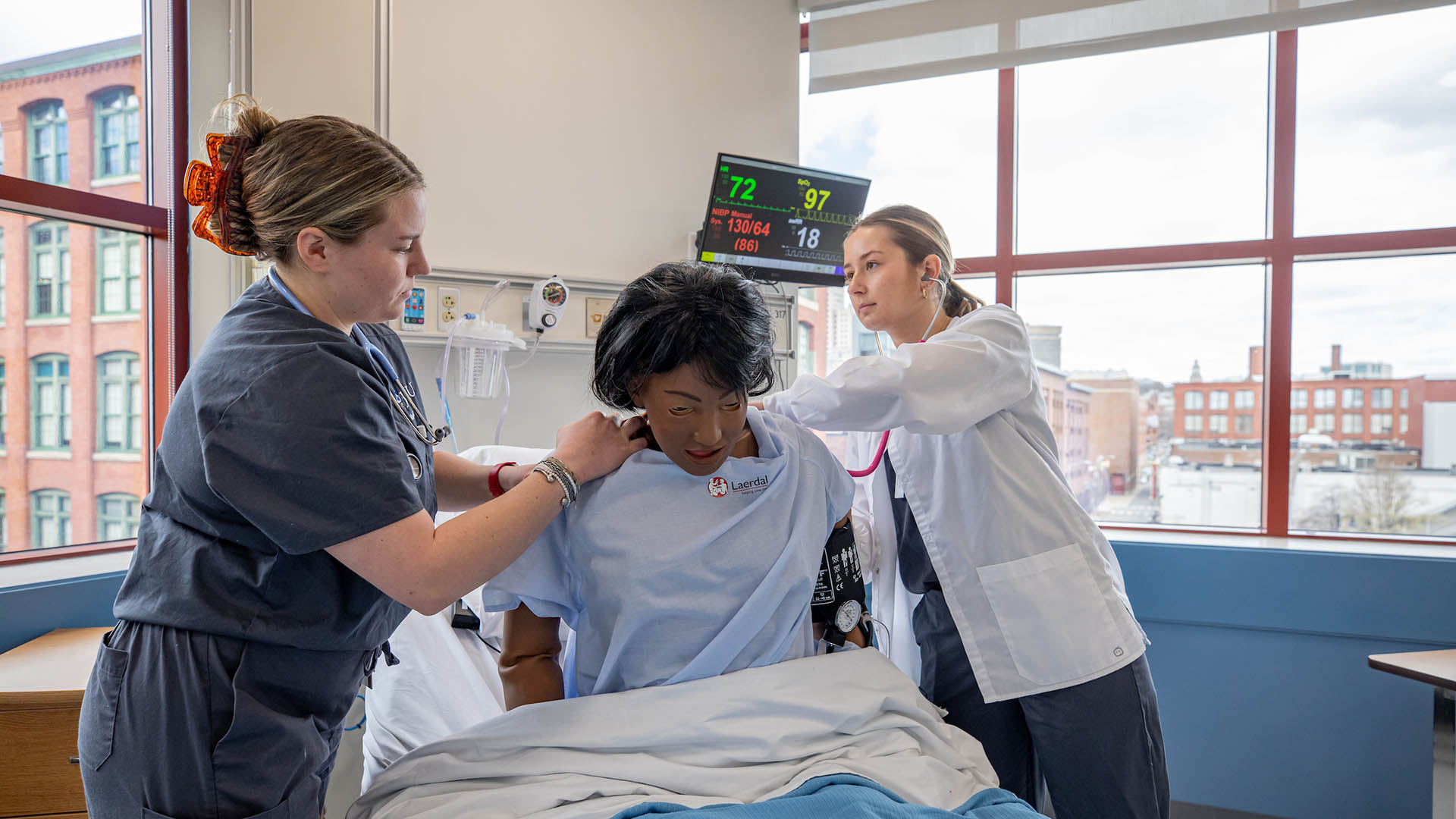Going Green: OTD Students Explore Dietetics
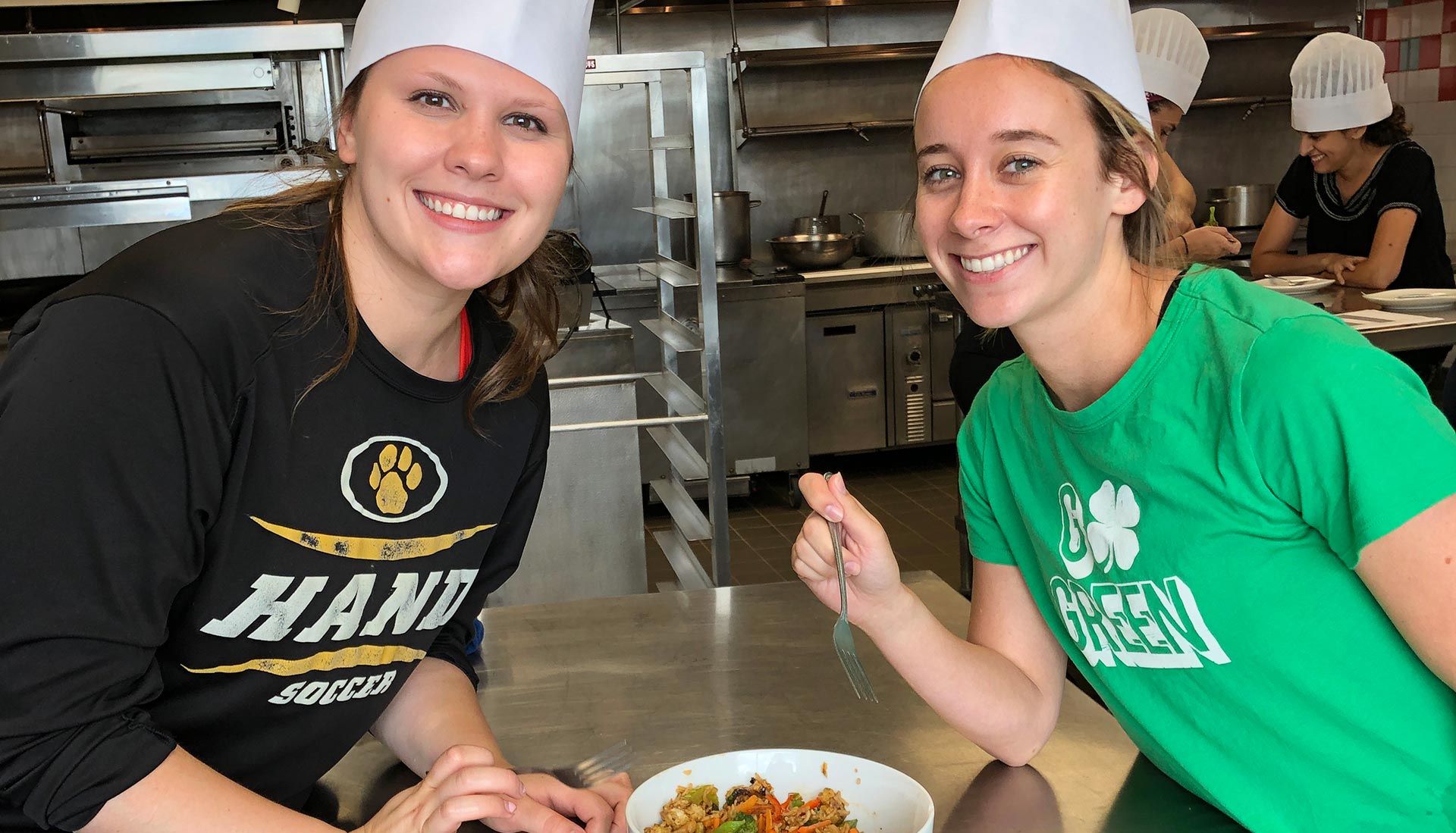
A quick online search for healthy, balanced diets results in an overwhelming amount of conflicting diet advice: keto, Atkins, paleo, lemon detox, Whole30, and the cabbage soup diet are just some of the trending fads. Chef Todd Seyfarth, program director for the Culinary Nutrition and the Dietetics and Applied Nutrition programs at JWU, is here to set the record straight.
“Vegetables,” he says. And no, that’s not to say no meat should be incorporated into a healthy diet — but the primary focus should be the green stuff. Contrary to the Choose My Plate model, which leaves plenty of room for grains, protein, fruit, and dairy, Seyfarth knows that three-quarters of a plate should be primarily vegetable based.
This is especially important knowledge for those entering healthcare, as diet and overall health are tightly intertwined. Amy Wagenfeld, associate professor and capstone coordinator in JWU’s Occupational Therapy Doctorate (OTD) program, wasted no time in making sure her students learned about the critical links between diet and patient health.
"It’s hard to be a great chef. It is not hard to be a good cook."
The class assembled in the Cuisinart Center for Culinary Excellence in Providence’s Harborside campus, where they met Seyfarth and dove right into the basics of dietetics. Seyfarth covered common myths (“superfoods,” for example, don’t work in the human body — but when you double fruit and vegetable intake, there is a 13-15% increase in antioxidant power in the blood) and the evolution of the “balanced plate.”
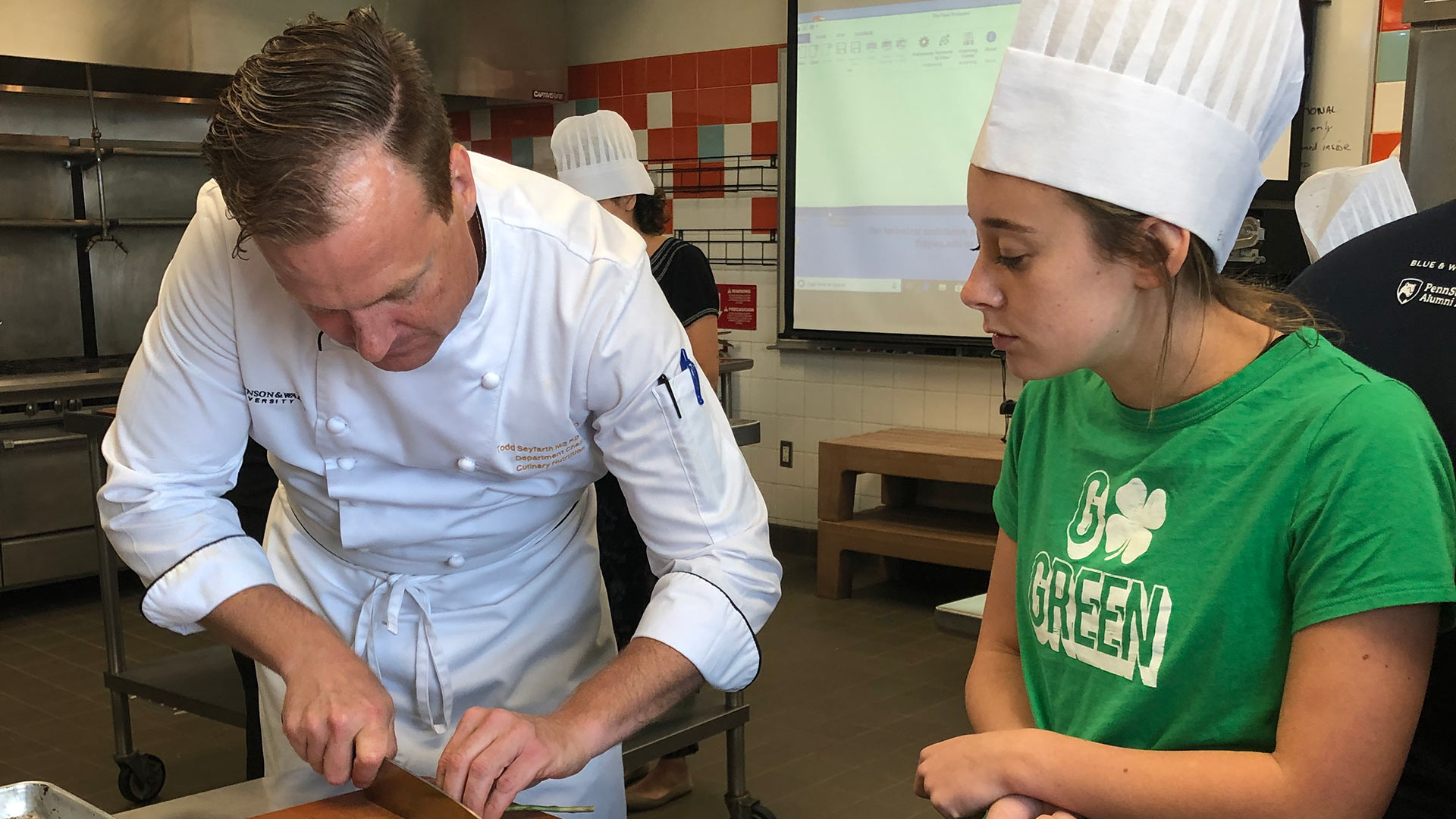
“There are four pillars to overall health,” he explains. “Diet, sleep, exercise, and stress management.” Following a proper diet has a tremendous impact on health and recovery — something that occupational therapists, as holistic practitioners, know very well. The aim of this interdepartmental collaboration was not only to teach students about the impact of diet on health, but also to introduce proper cooking techniques to the group. While many OTD students live on their own and cook for themselves, some were not altogether comfortable in a kitchen. Seyfarth put their minds at ease. “It’s hard to be a great chef,” he says. “It is not hard to be a good cook.”
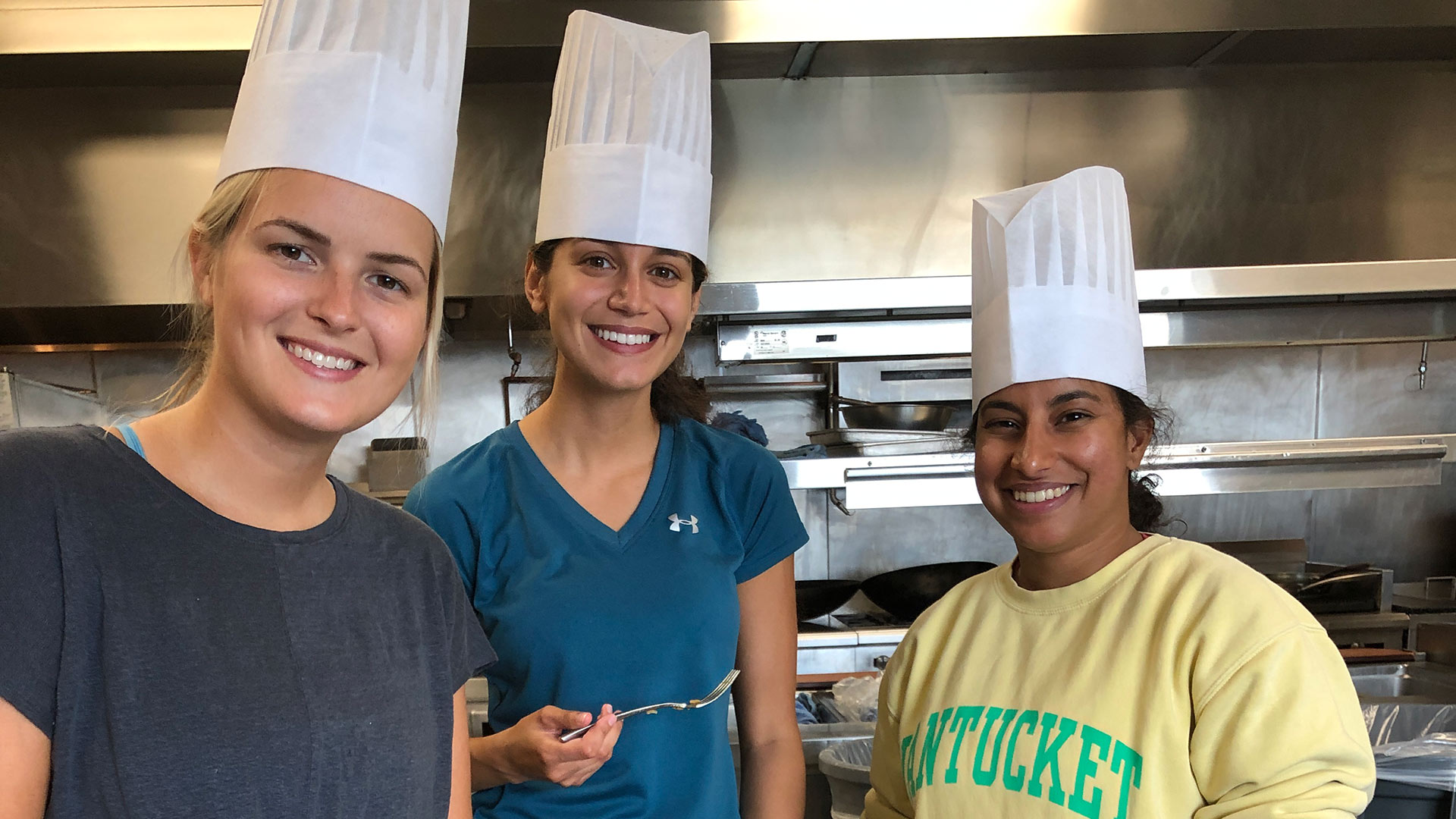
After a demonstration of proper knife technique, the class split into groups and began preparing items for stir fry. Soon, the fragrant aroma of garlic, ginger, onions, and peppers filled the kitchen space as students sliced and diced their way through the ingredient list.
Seyfarth helped each group put their ingredients in the wok, following a precise process due to the high heat, to complete their dishes. Once completed, the class sampled the dishes, some members trying new foods (like tofu) for the first time.
